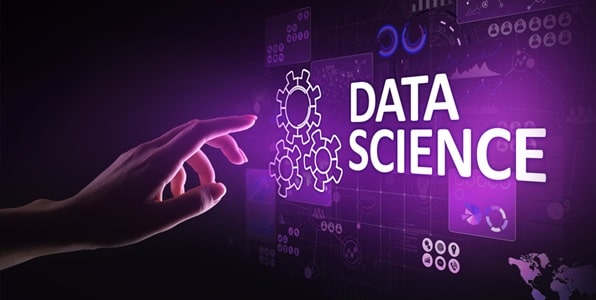In Data Science, where information transforms into actionable insights, implementing statistics is the bedrock of analytical prowess. As we delve into the intricate world of data-driven decision-making, the symbiotic relationship between statistics and data science becomes increasingly evident. Statistics provides the methodologies to analyze vast datasets and offers the lens through which patterns, trends, and correlations emerge from the data’s intricate web.
This article delves into the pivotal role that statistics plays in Data Science, unraveling its significance, methodologies, and the transformative impact it has on extracting meaningful narratives from the vast sea of information. Join us on a journey where statistical methodologies become the guiding force in unraveling the mysteries hidden within the numbers, unlocking the true potential of data science applications.
Central to the essence of data science is the field of statistics, a pivotal discipline instrumental in distilling meaningful insights from extensive datasets. This piece delves into the importance of statistics within data science, shedding light on its diverse applications and showcasing how statistical methodologies significantly contribute to the triumph of data-driven initiatives. An IIT Madras data science course offers a comprehensive and specialized curriculum to equip individuals with the skills needed for a successful career.
What is Data Science?
Data science is a multidisciplinary field that collects, analyses and interprets large volumes of data to extract valuable insights, inform decision-making, and solve complex problems. It combines techniques from statistics, mathematics, computer science, and domain-specific knowledge to uncover patterns, trends, and relationships within data. Data scientists use various tools and algorithms to process and analyze data, making it a powerful field for extracting actionable information and predictions from diverse datasets.
What are statistics?
Statistics is the discipline that collects, analyses, interprets, presents, and organizes data. It involves using mathematical methods to summarize and draw inferences from information, helping to describe and understand complex phenomena by quantitatively examining patterns and relationships within datasets. Statistics provides tools and techniques for making informed decisions and drawing conclusions based on empirical evidence.
Application of Statistics in Data Science
Data Exploration and Preprocessing: Statistics aids in comprehending the distribution, central tendency, and variability within data. Data scientists can extract preliminary insights and pinpoint potential data quality issues through exploratory data analysis techniques such as mean, median, standard deviation, and correlation coefficients.
Hypothesis Testing: Using statistical hypothesis testing empowers data scientists to validate assumptions, draw inferences, and ascertain the significance of relationships between variables. This method establishes a framework for evaluating the validity of claims and drawing conclusions based on evidence derived from sample data.
Regression Analysis: Regression analysis, a statistical technique, facilitates identifying relationships between dependent and independent variables. Employed by data scientists, regression models make predictions, discern the influence of various factors, and unveil patterns inherent within the data.
Experimental Design: Statistics directs the planning and execution of experiments in data science, empowering researchers to determine suitable sample sizes, manage confounding variables, and analyze experimental outcomes for precise and reliable conclusions.
Sampling Techniques: Statistics offers methodologies for choosing representative samples from extensive datasets. Sampling techniques like random sampling, stratified sampling, and cluster sampling assist data scientists in gaining reliable insights without the need to analyze the entire population.
Data Visualization: Statistics improves data visualization by offering graphical techniques that effectively represent data. Visualization tools such as histograms, scatter plots, and box plots empower data scientists to visually communicate insights, making intricate information more accessible to stakeholders.
Machine Learning and Statistics: Machine learning algorithms frequently employ statistical concepts for prediction and data classification. Methods like, decision trees, support vector machines, and neural networks integrate statistical principles to analyze patterns and make precise predictions based on training data. Statistics is foundational in evaluating and validating models, as well as interpreting results in the realm of machine learning.
Importance of building mastery in statistics for data science
Mastery of statistics is fundamental for success in data science, serving as the cornerstone of analytical decision-making. Statistics provides the tools to dissect and comprehend complex datasets, extracting meaningful insights that guide informed conclusions. A solid statistical foundation empowers data scientists to navigate the intricate landscape of data, unravel patterns, and discern correlations, facilitating the identification of trends and outliers.
In data science, the ability to formulate and rigorously test hypotheses relies heavily on statistical techniques. Whether validating assumptions, conducting hypothesis testing, or assessing the significance of relationships between variables, statistics underpins the entire process. Proficiency in statistical methods allows for the meticulous design and execution of experiments, ensuring robust and representative data collection.
Moreover, statistics is pivotal in model building and validation within machine learning. Algorithms that power predictive models, such as regression analysis or decision trees, are rooted in statistical principles. A nuanced understanding of statistics enables data scientists to select appropriate models, assess their accuracy, and interpret the results effectively.
Building mastery in statistics for data science is indispensable. It not only facilitates precise analysis and interpretation of data but also empowers data scientists to make informed decisions, driving the field forward in its quest to extract actionable insights from the vast and complex world of data.
Conclusion
In the dynamic landscape of data science, the implementation of statistics emerges as the linchpin for extracting profound insights. From understanding data distribution to conducting hypothesis testing, statistics shapes every facet of data-driven decision-making. An IIT Madras data science course is a beacon, offering a specialized and comprehensive curriculum to delve into statistical methodologies. Through structured learning, expert guidance, and practical application, this course propels individuals toward mastery of statistics, enabling them to navigate the intricate world of data science with precision. The fusion of theoretical knowledge and hands-on experience equips learners to unravel the complexities of data, fostering a new era of informed and impactful decision-making.
Anantha Nageswaran is the chief editor and writer at TheBusinessBlaze.com. He specialises in business, finance, insurance, loan investment topics. With a strong background in business-finance and a passion for demystifying complex concepts, Anantha brings a unique perspective to his writing.



